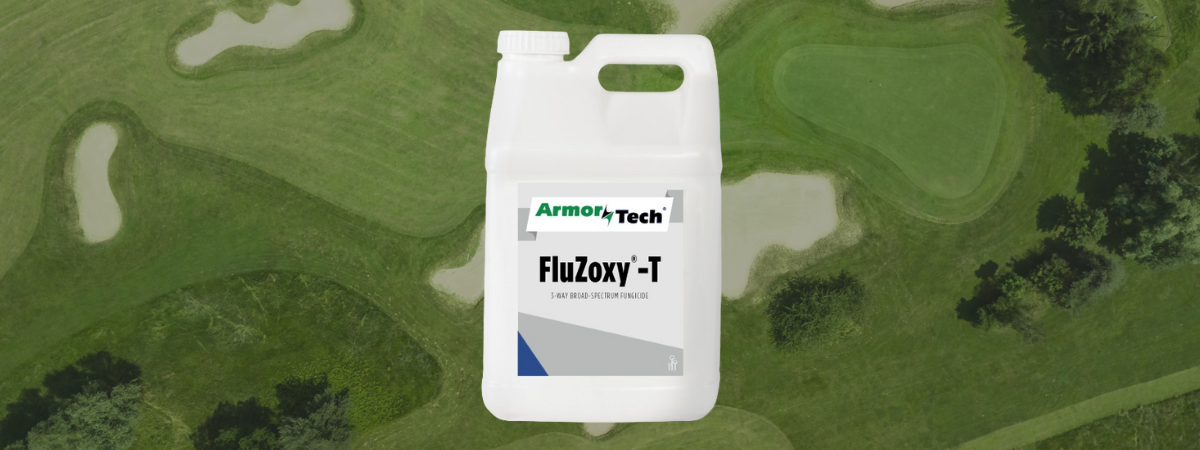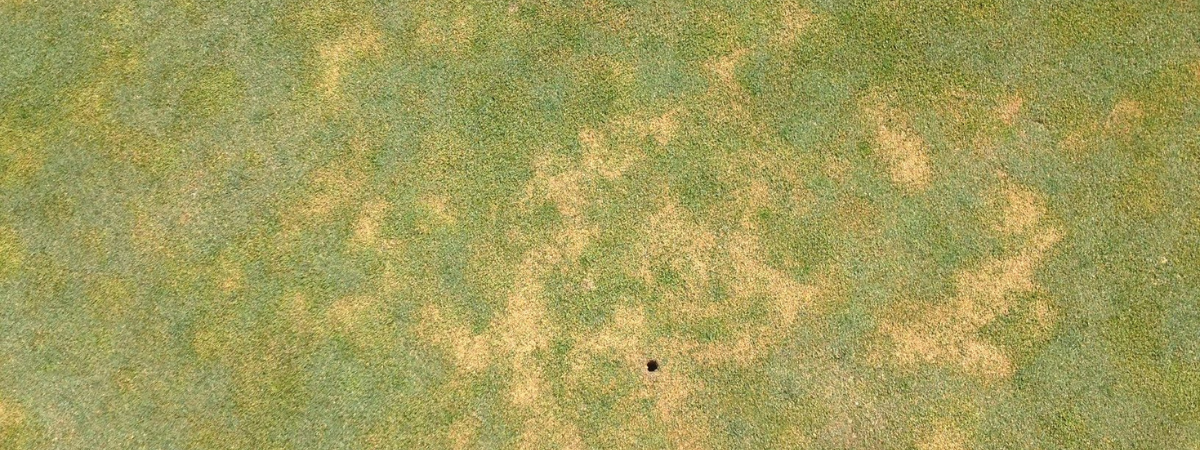We asked Aaron Hathaway, Nufarm Technical Services Manager, a few questions about Anuew and Poa annua seedhead suppression. Learn what the benefits are of using Anuew for Poa annua seedhead suppression and how to incorporate it into your seedhead suppression sprays.
What does a sound seedhead suppression program look like?
Proxy (ethephon) is the only PGR, besides Embark (mefluidide) which is no longer available, that has been proven to consistently suppress annual bluegrass seedheads on golf course turf. Conventional wisdom on number and timing of Proxy applications has changed in the last few years due to continued research efforts to increase efficacy. It is important to apply Proxy before seedhead formation initiates in annual bluegrass plants to effectively suppress them – this is difficult to do because annual bluegrass has so many biotypes with differing behaviors. So, research has shown that adding a Proxy application timing in the fall (often sometime in November) improves seedhead suppression, in theory, because some annual bluegrass biotypes begin production of seeds prior to the spring. The best management practices for seedhead suppression have become 3 applications of Proxy: 1 app in the fall, 1 app in the spring, and 1 app 21 days later. These 3 timings seem to address many, not all, of the differing annual bluegrass biotypes as they initiate seed production. The specific times of application in the spring follow growing degree days (GDDs) and websites like GDDtracker.net can help you accurately track these GDDs in your region to take some of the guess-work out of the first spring application timing.
So what are the benefits of incorporating Anuew into these applications?
Anuew and other Class A PGRs (trinexapac-ethyl) do not suppress seedheads on their own, but they do delay seedhead production by annual bluegrass plants. This delay in seedhead production, in theory, could buy some time for Proxy to get into the plants and to the active site to suppress seedheads. Mixing Proxy with Class A PGRs has shown to provide more consistent seedhead suppression. Further, applying Anuew in tandem with spring Proxy treatments can result in less chlorosis or yellowing of turf. Proxy applied on its own can cause yellowing in annual bluegrass while the addition of Anuew can increase darker green color at appropriate rates.
How should Anuew be utilized in conjunction with seedhead suppression applications?
It isn’t necessary to include Anuew in any fall-applied seedhead suppression treatments applied late in the season when turf growth has slowed anyway due to cooler temperatures. I recommend adding Anuew to your first seedhead suppression in the spring and any subsequent spring applications. However, follow a step-wise rate increase approach by starting with a low rate and increasing as temperatures increase. Proxy will provide some growth regulation on its own so it isn’t necessary to limit growth too much more in the spring with another PGR. Follow the strategy below for improved turf quality and seedhead suppression:
- Proxy at 5 fl oz/M : Fall
- Proxy at 5 fl oz/M + Anuew at 1 oz/A : Spring (use GDDtracker.net for timing)
- Proxy at 5 fl oz/M + Anuew at 2 oz/A : 21 days after previous application
- Continue Anuew applications and increase rates as preferred (use GreenKeeperApp.com for help with reapplication intervals)
What other benefits do these early Anuew applications provide?
Anuew can regulate vertical growth of turfgrass plants in the spring and enable partitioning of energy to other plant parts and processes which is followed by a host of subsequent advantages such as reduced water use and reduced wear and tear on mowers among a myriad of other benefits. However, these early Anuew applications can lead to a stronger annual bluegrass plant because it hasn’t spent excessive energy on seed production and unnecessary vertical growth. Research has shown that these stronger plants are better prepared to withstand disease pressures like pink snow mold that may show up in the spring and anthracnose that afflicts annual bluegrass later in the stressful heat of the summer.
Aaron Hathaway
Technical Services Manager
Nufarm Americas Inc.












